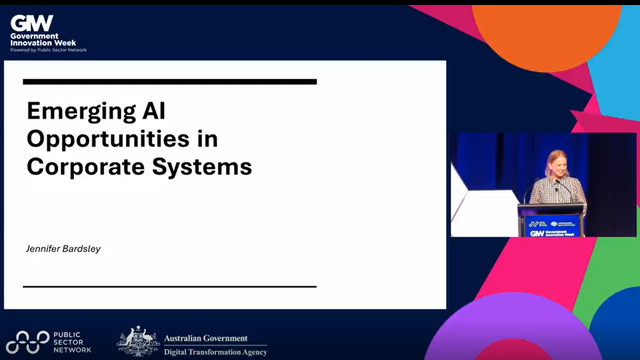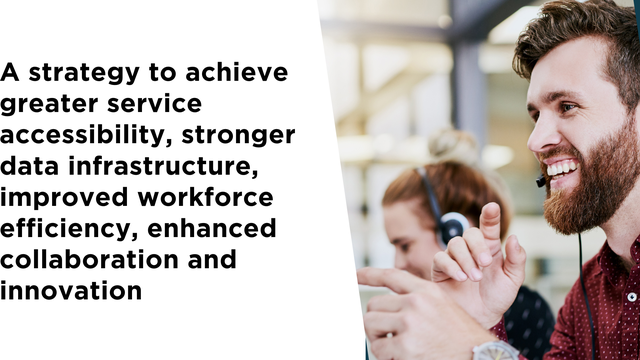
Using Data Governance as an Enabler Rather Than a Barrier or Checklist
Removing the burden from data governance
Most organisations, whether they are in the public or private sector, usually see the concept of governance as a necessary evil. They know they need to have good policies and procedures in place, but creating the policies and maintaining them is not something that most organisations are excited about. Yet despite that, data governance for instance is such a critical element that most organisations might not be able to function without it give how much data is now being consumed across most contexts. So much so that Kim Weimer, the Assistant Director of Regulatory Data & Analysis at the Essential Services Commission (ESC) of South Australia, says that “if done correctly, it [governance] can actually be used to reinforce and support the other aspects of your organisation.” The problem is that most people don’t see it that way and in fact see governance, and data governance in particular, “as a burden and full of complexity.”
The truth is that data can be complex, but it also has great value. As far back as 1994, it started being noted that “a data asset is data that is or should be documented and that has value or potential value.” Therefore if every piece of data can be seen as having value, and “if we can reimagine data governance as a vehicle for getting trusted data to the end users more quickly,” then that should “smooth the path rather than create a set of hurdles.”
Creating a new framework
This idea of removing the burden from data governance was one of the drivers of a new framework at the ESC. It was important to them because the ESC in SA is “an independent statutory authority.” It has two broad roles: “to be an economic regulator of essential services like water, sewerage, electricity, gas, rail and maritime services; and to provide advice on regulatory and economic matters.” This advice includes information regarding “strategic management and funding sources.” It was in that context that about two years ago the ESC “started implementing a centralised source of data and information, and through that we developed a framework.” The framework, which is about “informing decision-makers,” has four strands: “cultural change, governance, technical engagement and stakeholder engagement.” Whilst all four are important and necessary, governance causes the greatest angst and is the most complex.
Governance in this context covers aspects like “policies for information management, data sharing arrangements, reporting, establishing procedures, conventions and data dictionaries.” None of these are “standalone” and in fact the interaction between them is central to the framework and is ultimately “for the benefit of consumers.” Yet for all the interaction and centrality of data and the governance behind it, “most of us rarely list data as one of the assets of our organisations.” To overcome this and to reinstate data governance in its central position, the framework is underpinned by three fundamental questions, “which we all need to ask ourselves” every time we think about data governance: “Why are we doing this or why do we need it? What are we trying to achieve? Is this the best way?”
To answer these questions, and to keep data governance prominent, the framework has a number of recommendations. Firstly, whatever it is that needs to be done, needs to be “kept it simple and easy so that all people can do the right thing.” It is also a good idea to make things integrated. For instance, “move away from tick-box compliance and embed data governance processes in what people are doing already.” On top of that, the process should be “iterative and flexible. Test as you implement. It doesn’t have to be perfect to start with.” Doing things slowly or one-at-a-time makes them “manageable and not overwhelming.” Testing is also important and makes things easier. For instance, “put a policy in place and revisit it in a few months. Is it effective? Do staff use it? If the answer is no, change it or better yet, let staff co-create a solution that works for them.” On top of that, every organisation has a different level of “maturity and risk appetite.” As the data maturity increases, the complexities will increase too so everyone needs to be ready for that. But if things were done slowly and there is flexibility, then it should be fine. Finally, it is important for the process to be “inclusive. Include everyone and celebrate the small wins.”
“To be effective, the governance processes and procedures need to be used by everyone so that they can use them to drive organisational change and cultural change.”
Examples of success and tips for the future
At the ESC the framework has been in effect for a couple of years and it is showing positive results. For instance, “we’ve integrated our data governance into our business-as-usual.” This means that there are regular updates for the leadership teams, which “provides an opportunity for us to share successes and for them to be included in the celebration of duty milestones.” In terms of data security, whilst everyone is involved in some way, “only a limited number of staff have access to create and maintain the datasets, which allows for greater control. This means that data quality checks and verifications are performed, and only authorised information is published.”
In terms of the data itself, though some of it is in the cloud, “we ensure that it remains in Australia and even the backup arrangements are within Australia.” All the data is depicted through flowcharts that are available on the intranet “giving staff a level of reassurance that they are doing the right thing.” Contact numbers of all the data owners and the legal teams are also plastered throughout the intranet, so “staff can always contact them for further advice.” Across all the datasets and dashboards, there are also tags or labels that “identify the different levels of data security or sensitivity and can provide more information.” Apart from all that, “we also make training videos that easily explain the processes and procedures, and are for both the technical team and the general staff.” Consistency in this regard is important, and all the dashboards, all the processes and even all the videos have the same look and feel, making them easily accessible and easily identifiable.
Governance, and data governance in particular, will always be boring or uninspiring for most people. The key however is to “reimagine it, making it different and relevant to each organisation in its own way.” However, this should not be done in silos. “We can borrow from each other and get ideas, but the most important thing is to involve your staff. Get them to co-create the policies, processes and procedures that will turn data into an asset that is used with confidence by everyone in the organisation.” Whilst in some bigger organisations this may be a bit more complicated and will require formal structures, it will nonetheless show “where the boundaries are and who is responsible for what.” Meanwhile, in smaller organisations, some of the processes may not be necessary and may seem “stifling, so the context is always important.” Ultimately, the purpose data governance and of doing any of this is to instil “processes and procedures that smooth the path and remove obstacles.”

































